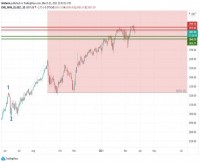|
|
Opalesque Industry Update - The Swiss banking group SYZ & CO has announced today the launch of OYSTER ForExtra Yield EUR, a new sub-fund of its OYSTER Funds SICAV. The sub-fund seeks to take advantage of the high interest rates paid by certain currencies. This innovative strategy has been tested successfully for two years before being made available today in the form of a UCITS III fund. It avoids the main drawbacks of conventional Forex products and, owing to its very low correlation with traditional asset classes, is an excellent means of diversification. Each month its assets are invested via forward foreign-exchange contracts in the five currencies having the best risk/return ratio. Macro-economic filters developed by the Bank allow the downside risks to be limited in periods of market turbulence. Although it is still reserved for institutional clients, OYSTER ForExtra Yield EUR will shortly be registered in a number of European countries, including Switzerland, which will enable it to be accessible to the general public, like the other OYSTER sub-funds.
The Forex market: an as-yet little-exploited territory
With a daily trading volume of CHF 4 trillion1, the forex market is the largest and most liquid of the world’s financial markets. Since it is virtually uncorrelated with the traditional asset classes, this market could constitute a worthwhile means of diversification. Unfortunately, the usual means of investing in it suffer from some considerable drawbacks that make it an as-yet little-exploited territory. Hedge funds which bet on an appreciation or depreciation of currencies usually use considerable leverage and their results are highly volatile. Furthermore the products that seek to take advantage of the “carry trade” (interest-rate differential between two currencies) are also characterized by substantial leverage and therefore involve a significant downside risk.
Why invest in high-yield currencies?
Many academic studies have shown that, in general, the additional yield paid by the high-yield currencies more than compensates for their risk of depreciation. In other words, there is a kind of “emotional premium” that those currencies have to pay to attract investors and of which it is possible to take advantage. Moreover, the fundamental situation of many emerging countries is much better than that of the principal developed countries, be it in terms of their growth rate, level of debt or public deficits, which even allows one to envisage an appreciation of their exchange rates.
OYSTER ForExtra Yield : an efficient and transparent solution
The strategy developed for OYSTER ForExtra Yield by Fabrizio Quirighetti, chief economist of Banque SYZ & CO, and Akimou Ossé, head of risk management for the Group, enables investors to avoid these stumbling blocks, while benefiting from the high yields and structural progress of the emerging currencies. It consists of buying the selected currency through a forward contract then reselling it at the spot rate at maturity, a technique that allows the interest-rate differential with the fund’s reference currency (EUR) to be captured while limiting the counterparty risk.
The investment universe comprises all the currencies of the MSCI World and MSCI Emerging Markets indices, with the exception of some illiquid markets. In order to focus on the most worthwhile currencies, each month the managers select the five currencies having the best risk/return ratio, measured by the interest-rate differential with the euro, divided by the expected volatility. The fund’s assets are then invested with an equal weighting in these five currencies, via one-month forward foreign-exchange contracts or non-deliverable forwards (NDFs) for the currencies that are non-convertible or subject to restricted convertibility. The cash is invested in short-term deposits in the reference currency.
The result is a diversified portfolio that benefits from the UCITS III regulatory framework, is only weakly correlated with traditional asset classes, and is rebalanced systematically every month by means of a simple and transparent process without any leverage.
In October 2010 the five currencies selected were the Brazilian real, the Indian rupee, the Polish zloty, the South African rand and the Turkish lira.
Macro-economic filters to reduce the devaluation risk
The main investment risk in the high-yield currencies is that of a devaluation. In order to limit this risk, the Banque SYZ & CO management team has developed proprietary macro-economic filters that are activated in periods of turbulence in the financial markets. This is because when the equity markets are very volatile, investors tend to revert to safer assets and therefore to liquidate their positions in those currencies with fundamentals deemed more fragile. These filters are based on conventional macro-economic data (current account deficit, tax deficit, inflation, economic growth) but also on market indicators such as sovereign CDS spreads. As a result of implementing these filters, the managers thus withdrew the Hungarian forint from the portfolio in April 2010, just before the euro crisis. Moreover, if unforeseen events occur, the managers may at any time decide to liquidate the positions in a currency in the course of a month. This was the case notably with the Mexican peso during the outbreak of H1N1 influenza in Mexico in April 2009.
A proven strategy now available in a UCITS product
Prior to being implemented in this new sub-fund of the Luxembourg OYSTER Sicav, this strategy was first successfully tested for two years in a structured product issued by JP Morgan Structured Products BV, and managed identically.
Available in EUR, the new sub-fund OYSTER ForExtra Yield is open every week for subscriptions and redemptions. An application will be filed in the near future to have the fund registered in various European countries, including Switzerland, so that it can be distributed to the general public like the other OYSTER sub-funds. For the moment it is therefore accessible only to institutional investors.
All the fund’s details are available in the prospectus.
(press release)
About OYSTER
OYSTER is the investment-fund family of the SYZ & CO Group, designed to bring its management expertise to a broad public. This Luxembourg SICAV comprises 26 sub-funds which, together, make up a well-balanced offering. It is currently registered and sold in Luxembourg, Switzerland, Italy, France, Spain, Germany, Austria, the Netherlands and Belgium through a vast distribution network. www.oysterfunds.com
About SYZ & CO
Founded in 1996 by Eric Syz, Alfredo Piacentini and Paolo Luban, the Swiss banking group SYZ & CO has established itself as a respected player in the financial industry, thanks to its original concept and its proven long-term track record. SYZ & CO focuses exclusively on asset management, with 400 employees and assets under management totalling CHF 25 billion (EUR 19.5 billion). In addition to the Bank’s headquarters in Geneva, the Group also has offices in Switzerland in Zurich, Lugano, Locarno and internationally in Milan, Rome, Madrid, London, Luxembourg, Vienna, Nassau and Hong Kong. www.syzbank.ch
- FG
|





 RSS
RSS







